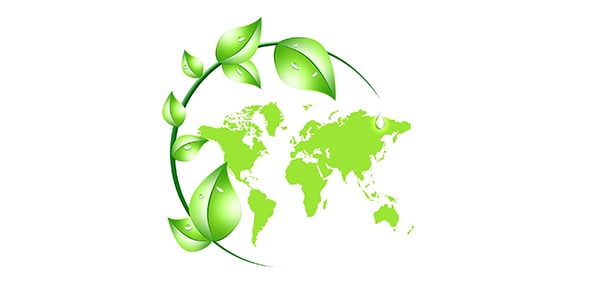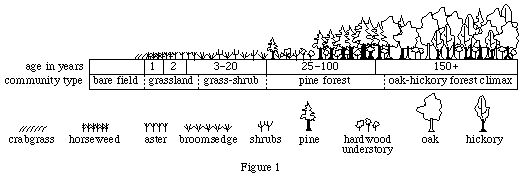Ecology Unit Pre-assessment (Grade 8)

The 'Ecology Unit Pre-Assessment (Grade 8)' evaluates students' understanding of ecological relationships, food webs, and ecological succession. It assesses critical thinking in identifying biotic factors, autotrophs, and the impact of predator population changes on ecosystems.
- 1.
Termites are small insects that eat wood causing so much damage that they can eventually cause a house to fall down. However, termites cannot make enzymes that digest cellulose, the main component in wood. A small protozoan called Trichonympha sphaerica lives inside the termite’s gut and excretes enzymes to break down cellulose. However, the protozoa itself cannot make the enzymes. Instead, a species of bacteria that lives inside the protozoa produces the enzyme. What type of relationships are described in this passage? (Standards 6.1f, 6.1g, 6.3a)
- A.
Predator/Prey
- B.
Consumer/Decomposer
- C.
Parasitism
- D.
Mutualism
- E.
Commensalism
Correct Answer
D. MutualismExplanation
The passage describes a mutualistic relationship between the termite and the Trichonympha sphaerica protozoan. The termite provides a habitat for the protozoan, while the protozoan provides the enzymes needed to break down cellulose in wood, benefiting both organisms.Rate this question:
-
- 2.
In the food web depicted below, which organism is the autotroph (Standards 1.1a, 1.1b, 1.1c, 6.1a)?
- A.
Owl
- B.
Hawk
- C.
Tree
- D.
Grasshopper
- E.
Rabbit
Correct Answer
C. TreeExplanation
The correct answer is Tree because autotrophs are organisms that can produce their own food through photosynthesis or chemosynthesis. Trees are autotrophs because they can convert sunlight into energy through photosynthesis.Rate this question:
-
- 3.
What important biotic factor is missing from the food web (Standards 1.1b, 1.1c, 6.1a, 6.1g)?
- A.
Water
- B.
Decomposers
- C.
Producers
- D.
Consumers
- E.
Sunlight
Correct Answer
B. DecomposersExplanation
Decomposers are an important biotic factor missing from the food web. Decomposers play a crucial role in breaking down dead organisms and organic waste, returning nutrients to the ecosystem. Without decomposers, the food web would not be able to efficiently recycle nutrients, leading to a buildup of dead organic matter and a decrease in overall ecosystem health.Rate this question:
-
- 4.
The process is best described as (Standards 6.3b, 6.3c):
- A.
Ecological Succession
- B.
An Energy Cycle
- C.
Negative Feedback
- D.
A Food Web
- E.
Commensalism
Correct Answer
A. Ecological SuccessionExplanation
Ecological succession refers to the process of change in the species composition and structure of an ecological community over time. It involves the gradual replacement of one community by another, as different species colonize an area and modify the environment, making it more suitable for other species. This process occurs after disturbances or on barren land, and it is essential for the long-term stability and biodiversity of ecosystems. Therefore, the given process is best described as ecological succession.Rate this question:
-
- 5.
Which of the following organisms could fit in the space labeled x in this food chain? (Standards 1.1a, 1.1b, 1.1c) Grass → X → Snake → Puma
- A.
Raptors or Eagles
- B.
Mice
- C.
Leaves
- D.
Coyote
- E.
Algae
Correct Answer
B. MiceExplanation
Mice could fit in the space labeled x in this food chain because they are herbivores that eat grass, and they are prey for snakes. Snakes are then prey for pumas, so mice would fit in the chain as the organism that is consumed by the snake.Rate this question:
-
- 6.
Coyote, wolves, and other carnivores occasionally kill chickens, pigs, and cows that live on farms, although they mostly eat small mammals that live in the wild. Farmers will frequently kill these predators to protect their livestock. Which result is most likely to occur when the predator population decreases (Standard 6.1d, 6.1e)?
- A.
Herbivores will exceed carrying capacity and begin eating crops.
- B.
The amount of healthy livestock on the farm will double in size.
- C.
More grasses and seeds will be available for livestock to consume.
- D.
Decomposers will take the place of predators in the ecosystem.
- E.
The amount of parasites infecting the predators will increase.
Correct Answer
A. Herbivores will exceed carrying capacity and begin eating crops.Explanation
When the predator population decreases, there will be fewer predators to control the herbivore population. As a result, the herbivore population is likely to increase and exceed the carrying capacity of the ecosystem. With more herbivores, there will be increased pressure on available food resources, leading them to start eating crops. This can result in damage to crops and a decrease in agricultural productivity. Therefore, the most likely result when the predator population decreases is that herbivores will exceed carrying capacity and begin eating crops.Rate this question:
-
- 7.
All life requires energy, carbon, oxygen, hydrogen, and nitrogen. Which statement best describes how they are used in the biosphere? (Standards 6.1a, 6.1b)
- A.
Energy is recycled but elements must be added from the outside.
- B.
Elements are recycled, but energy must be added from the outside.
- C.
Both energy and elements are recycled.
- D.
Neither energy nor elements are recycled.
- E.
The amount of elements and energy constantly increase.
Correct Answer
B. Elements are recycled, but energy must be added from the outside.Explanation
In the biosphere, elements such as carbon, oxygen, hydrogen, and nitrogen are recycled, meaning they are constantly reused and transformed within living organisms and ecosystems. However, energy cannot be recycled and must be constantly added from the outside, usually in the form of sunlight through photosynthesis. This is because energy is constantly being converted and used up in biological processes, such as cellular respiration and metabolism. Therefore, the statement "Elements are recycled, but energy must be added from the outside" best describes how energy and elements are used in the biosphere.Rate this question:
-
- 8.
The main source of energy for a wetlands ecosystem is (Standard 1.1b, 1.1e, 1.1f)
- A.
Water
- B.
Soil
- C.
Plants
- D.
Fish
- E.
The Sun
Correct Answer
E. The SunExplanation
The Sun is the main source of energy for a wetlands ecosystem. Through the process of photosynthesis, plants in the wetlands convert sunlight into energy, which then supports the entire food chain within the ecosystem. This energy is transferred from plants to other organisms such as fish and other animals, ultimately sustaining the entire wetlands ecosystem. Without the Sun's energy, the wetlands ecosystem would not be able to function and support life.Rate this question:
-
- 9.
What are the two major life processes that involve carbon and oxygen (Standards 6.1d, 6.1e)?
- A.
Coal formation and photosynthesis
- B.
Photosynthesis and respiration
- C.
Fuel combustion and open burning
- D.
Death and decay
- E.
Nitrogen fixation and denitrification
Correct Answer
B. Photosynthesis and respirationExplanation
Photosynthesis is the process by which plants use carbon dioxide and sunlight to produce glucose and oxygen. Respiration, on the other hand, is the process by which organisms break down glucose to release energy and produce carbon dioxide and water as waste products. Both processes involve the exchange of carbon and oxygen, making them the major life processes that involve carbon and oxygen.Rate this question:
-
- 10.
Which term represents an indirect economic value of biodiversity?
- A.
Food
- B.
Clothing
- C.
Flood Protection
- D.
Medicines
- E.
Fuel
Correct Answer
C. Flood ProtectionExplanation
Flood protection represents an indirect economic value of biodiversity because healthy ecosystems, such as wetlands and forests, can help regulate water flow and prevent or reduce the impact of floods. These ecosystems act as natural buffers, absorbing and storing excess water, reducing the risk of flooding in surrounding areas. This ecosystem service provided by biodiversity is valuable in terms of preventing damage to infrastructure, property, and human lives, thus having economic implications.Rate this question:
-
- 11.
Rate, on a scale of 1 – 4, 1 being the lowest and 4 being the highest, how much do you know about ecology?
Correct Answer
1
2
3
4Explanation
This question is asking the respondent to rate their knowledge about ecology on a scale of 1 to 4, with 1 being the lowest and 4 being the highest. The answer "1,2,3,4" implies that the respondent knows about all levels of ecology, ranging from the lowest to the highest.Rate this question:
- 12.
Rate, on a scale of 1 – 4, 1 being the lowest and 4 being the highest, how interested you are in ecology?
Correct Answer
1
2
3
4Explanation
This question is asking the respondent to rate their level of interest in ecology on a scale of 1 to 4, with 1 being the lowest and 4 being the highest. The answer options provided are 1, 2, 3, and 4, indicating that the respondent can choose any of these numbers to indicate their level of interest.Rate this question:
Quiz Review Timeline +
Our quizzes are rigorously reviewed, monitored and continuously updated by our expert board to maintain accuracy, relevance, and timeliness.
-
Current Version
-
Dec 02, 2024Quiz Edited by
ProProfs Editorial Team -
Oct 03, 2009Quiz Created by
Tagscience
 Back to top
Back to top




